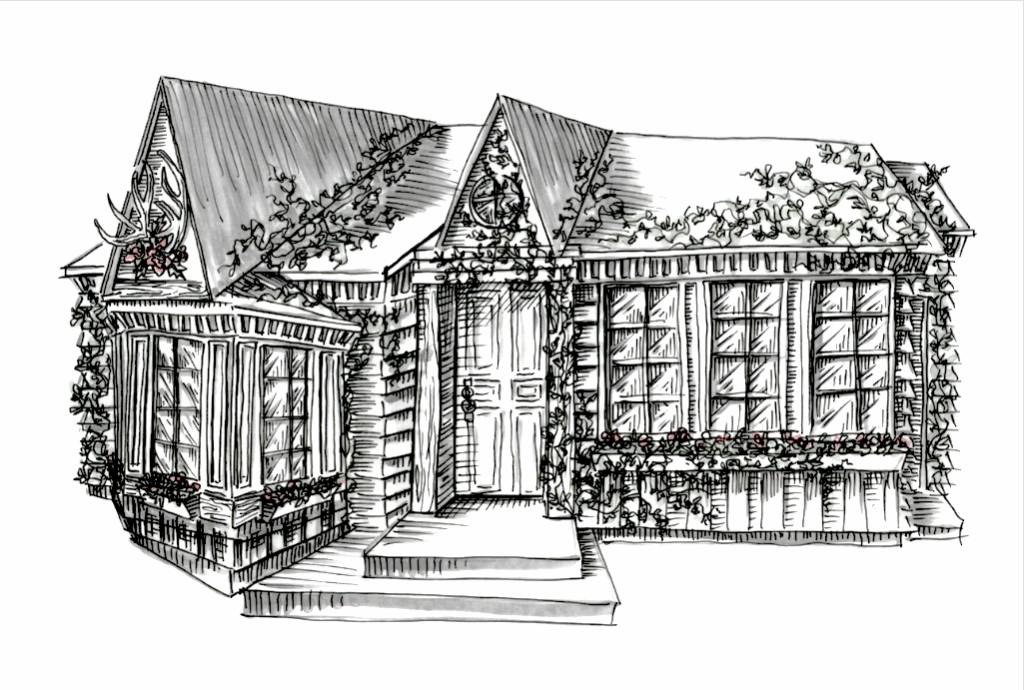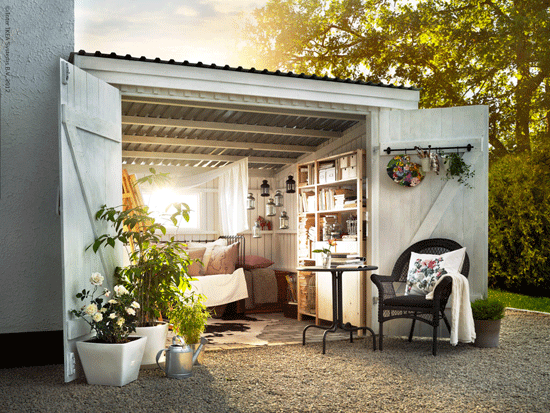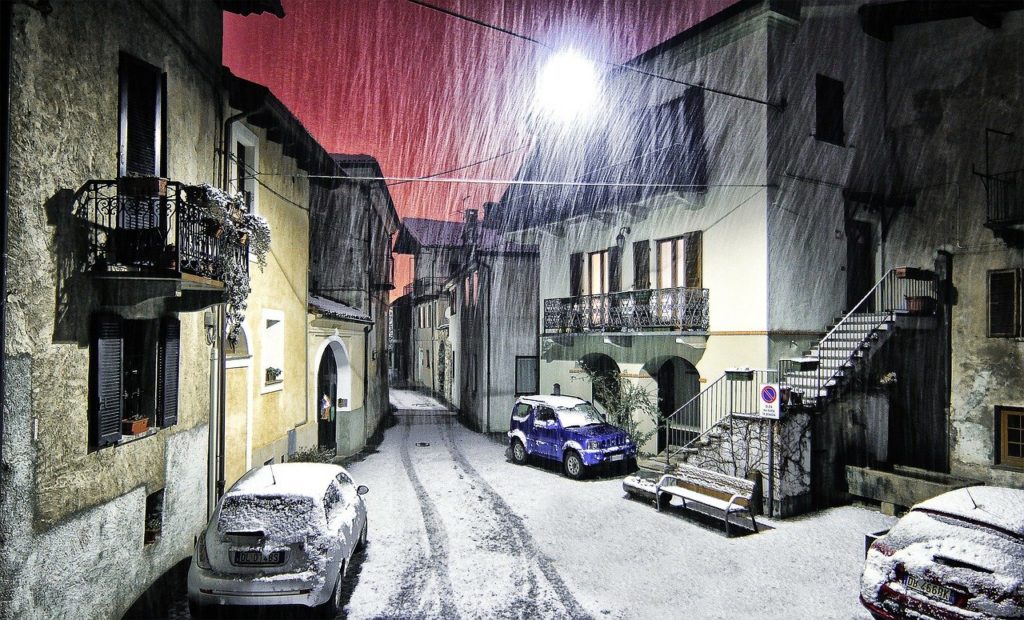Category Archives for Blogs

Common DIY Remodeling Mistakes and How to Avoid Them
Are you considering attempting a “do it yourself” project for your home? Professionals are in high demand for these types of projects because often time’s homeowners get in over their head, or forget Continue reading

Welcoming Michael, Our Latest Team Membe…
It’s been several months since he started with Drafting Cafe, but we’re officially welcoming Michael Davisson as our new Architectural Designer in the office. Michael has 12 years of experience with residential projects with custom design, remodels, and additions. He spent several years in Santa Barbara working with a residential architect on predominantly modern homes, and moved to Puerto Rico for a stint working as the primary designer for a custom home developer. His enjoys the architecture of the 1920-30’s, such as Frank Lloyd Wright and Greene & Greene. He has now settled in Oakland and has been enjoying the Bay Area. Our clients already working with Michael have been very impressed with his professionalism, design savvy, and general expertise. Welcome Michael, we’re thrilled you’re on our team!

An Oakland Cottage
Since we delight in our clients, we naturally enjoy a good project feature every now and again. Client stories are a great way for us to educate the community on our current and recent projects. They also remind us of one of our greatest privileges: sharing in the design process with wonderful people! This month, we’ve decided to feature an Oakland resident and truly delightful creative dreamer.
As we chose to elaborate upon in our “Rarely See the Inside of your Garage?” article, change of scenery and functionality can often bring an abundance of benefits to your property and quality of life. When it’s time for a change, like it was for our client, there is often an exhausting plethora of questions, concerns, doubts, ideas, and hesitations… “Can I afford to include a bathtub?”…“Will anyone really rent it? It might not be worth the financial risk”…“How do I choose just ONE of my brilliant ideas?!” These factors either motivate or deter us from taking the first brave step towards achieving our creative goals. However, as I previously mentioned, our featured client is a creative dreamer…one who’s made the sky her limit when it comes to ideas. Since the first conversations about repurposing her small backyard garage into a livable rental cottage, she has continually given realistic attention to a modest budget without sacrificing her unique vision.
When our client contacted us at Drafting Cafe, she had the following in mind:
- Increase in Square footage (existing=400 sq. ft.)
- 1 Bedroom/1 Bath
- Potential Greenhouse
- Potential Porch
…along with several wonderfully eclectic ideas for the exterior design, including concept inspiration images of the Church of the Transfiguration (a domed Russian church, constructed entirely of wood), a Gothic tiny house, and even the ever-popular Addams Family Mansion.
Clearly, our client was encouraging us to have fun with the process! Through varied means of communication (including an in-office consultation, phone calls, and e-mails), we have been able to productively entertain a number of ideas, each offering its own unique style and character. After the proposal of multiple floor plans, elevations, and concept drawings, her vision has begun to take form, one detail at a time.
“We shape our buildings, and afterwards, our buildings shape us”
-Winston Churchill
When you’re designing a space in which to live and/or share with guests, it MATTERS how it feels to stand at the kitchen sink or to walk through the front door. What does the space DO or NOT DO for your state of mind? Is it an environment that gives energy or drains it? These are important things to keep in mind when planning and designing. At Drafting Cafe, whether it’s a new construction or a simple remodel, we give care to the seemingly mundane details because we know that every piece will play a part in shaping the experience of that space.
The main house, on the front of the our client’s property, has a view that looks out and down upon her quaint backyard structure. Therefore, the roof of the cottage has been a priority for her in regard to aesthetics. Putting extra care into the personality and visual appeal of that view has been an important focus throughout our design collaboration. A ‘green roof’ has had quite the draw for our client as it would literally bring the rooftop to life-How perfect!…or, then again…how expensive??? As many of you residential project survivors know all too well, sticking to a budget can be quite the struggle.
In the midst of the design phase, our client’s creativity and open mind have really been the best tools for success in satisfying both the budget and the dream. For instance, we decided to hold off on the greenhouse for now. There could be the option to do additional phases down the road, if finances allow. In the concept drawing above, you’ll notice a playfully pitched roofline with crawling vines of ivy. This idea was a response to the expressed enthusiasm for rustic, Gothic, and Victorian structures. Might a roof with interesting angles be an aesthetically pleasing alternative if the green roof doesn’t fit the budget? It all comes down to that creativity and open mind when resourceful options are necessary.
We’re still ironing out details, asking questions, finding solutions, and excitedly looking ahead to the final stages of the Oakland cottage. However…I think that all of us at Drafting Cafe agree that when we complete projects for amazing clients, it’s a bit sad…we miss working with them! Our featured client from the Oakland cottage absolutely fits that “amazing client” category. Her combination of kindness, creative motivation, and flexibility in the design planning has been a real joy and privilege to experience.
If this article has awakened in you the desire to start a residential conversion project of your own, we invite you to read our article, “Rarely See the Inside of Your Garage?”

Rarely See the Inside of Your Garage?
I’m sure you’ve heard neighbors, friends, and others in your community talking about ADUs (Accessory Dwelling Units). They’re a hot commodity…and for good reason! Whether a tiny unit behind the home, an “In-Law Suite”, or a cool hang-out spot for kids, a new construction or conversion could become an asset to your property, finances, and community. Perhaps you need additional income each month, have an itch to design and lose yourself in Pinterest boards, or you’re an empty-nester with a longing to reactivate your maternal/paternal hospitality. Whatever the reason, ADUs can be a great option for home-owners around the world.
In the Bay Area, architectural character is not lacking. We love our friendly Victorians, Cedar shake siding, weaving stairways up home-speckled hills, and front porches, shaded by Magnolia and Lemon trees…but, is your garage too small for your SUV? If so, you’re probably not alone. Times have changed, presenting opportunities for creative repurposing!
Let’s zoom in on that specific type of ADU…the Garage Conversion. There are many benefits to repurposing a garage, whether attached or detached. Whether for creating opportunities for additional income, gaining the privacy of a detached office, or housing an aging parent, a converted garage could be a life-giving and profitable addition to consider. However, no matter how many potential benefits, the on-taking of an ADU project requires responsible research and realistic budgeting.
It is important to understand that “ADU” is a broad term, including several unique scenarios for the overall process, timeline, and costs of permitting, upgrades, remodeling, materials, etc. For instance, converting a detached garage is a very different project than the design/build for a new structure or converting an existing area in your home. It is also important to be aware that city codes often require more alterations and upgrades than may be anticipated, so be ready to adjust your expectations for timeline and budget to fit the reality of your project’s needs.
To help illustrate some potential budget-boosting and/or design-altering factors, here are a few examples to consider:
- If the existing structure is within 5 feet of a property line, the wall parallel to the property line will need to be fire-rated. This is not hard, but does require the existing siding to be removed.
- Insulation in the walls likely needs to include continuous R-10 insulation, either inside or outside of the walls. If on the inside, this alteration will shrink usable space.
- If the existing structure is no longer in-line with code, there may be upgrades and replacements required for foundations, concrete slabs, roofing, etc.
Interested in learning more about the step-by-step for converting a garage?
Follow this link for a helpful walk-through of the process:
Streamline Your Project:
Interested in diving into the ADU conversion process, but unsure about handling the unpleasantries of permitting, code requirements, and general management? Let Drafting Cafe help move things along with professional guidance and know-how. We will ask the necessary questions before moving forward to ensure that your time is not wasted and that the experience is as efficient and enjoyable as possible.
Whether or not you choose to include Drafting Cafe…
Happy Trails to you in your ADU ventures!

Reflections From a Camp Trailer
It was 2010, three years after the economy collapsed. Still feeling the effects, my brother and I weren’t exactly busy. The architecture firm I had been working for had shriveled down to the principal and myself, and my brother was a self-employed cabinet builder. It was October, and we had just shimmied a small excavator into our parent’s backyard. We were building a sunroom addition onto their house. In exchange for our unskilled labor, we were offered our family’s version of the “stimulus package”.
With some of my free time that year, I had picked up some small design jobs from a Craigslist posting. I wasn’t a licensed architect at the time, but that wasn’t a requirement when designing residential projects like kitchen remodels, decks, and additions. It occurred to me that many contractors and homeowners didn’t know how to approach an architect. Not to say that one couldn’t call them. Rather, they seemed unrelatable. They’d advertise the work they were most proud of which would often be high-end custom homes out of reach of many homeowners.
Many of those more humble homeowners were just looking for a simple set of plans. Thousands of houses in the Bay Area had never been updated to contemporary standards and aesthetics. Whether it was a family in need of another bedroom, or a kitchen from 1952 with pink tile countertops, there were architectural problems to be solved at the micro level. They didn’t need Frank Lloyd Wright, just some good ideas and practical knowhow.
My solution, of course, was to buy a camp trailer. I would convert it into a rolling cafe/meeting room and travel around the Bay Area to hunt down contractors. If I saw a jobsite, I’d invite the contractor into my trailer for a cup of coffee and pitch them my services. Much like their go-to electrician, I’d become a subcontractor doing the design for their clients and get their permits.
Before I bought that camp trailer, I needed to build my website and create the brand. As I mentioned, I wasn’t licensed yet. I couldn’t use the word “architect” for my business name or in my marketing material. I knew that I wanted to fall somewhere between an architect and a draftsperson, so I was avoiding the word “architect” anyway. I wanted people to feel that I was on their level, not some mysterious creative savant. While I loved designing spaces, drafting was really the core of the business. Knowing my ambition and the realities, it was pretty easy to find the name. Cafe as an experience felt perfect. Cafes were for friendly chats, slowing down, and enjoying jazz music. And, I’d be doing a lot of drafting. By conjuring the Cafe experience and marrying the concept with architectural drafting, Drafting Cafe was born.
I didn’t have any money, so I built my first website using straight html coding. Needless to say, I couldn’t afford that camp trailer either. I continued to advertise my services on Craigslist, but now I looked legit with a real brand and a website. Within a few months, I had enough work coming in to hire a draftsperson to work from my dining room. We were able to move to a shared office in downtown Oakland after about a year. Within a couple of years we had become a small office of four. In 2013, I got my architecture license and moved to our current location in Oakland.
Today, we have 9 people in a 700 square foot office. Some of our clients have garages bigger than that. It’s certainly tight, but the fact that we can sit on top of each other every day and still enjoy our jobs feels like my biggest accomplishment. Drafting Cafe only works because our team works so well together. We have been blessed with an amazing group of people and their dedication shows in our projects. I can’t thank them enough (though I will try my best by moving us to a much larger office in December). We’ve also been blessed with pretty amazing clients. Every business has its growing pains and Drafting Cafe has been no exception. There’s a lot we’ve had to learn-by-doing over the years, and I’m grateful to our clients for allowing us to grow and learn while working on their homes.
In the end, my parent’s stimulus package worked. The sunroom transformed their house, and their support was just the right nudge to keep us on our feet and thinking. My brother is no longer a starving cabinet builder. I was given the room to create something that I can deeply believe in. It feels pretty good to support a group of people whose task is to help restore, repair, and renovate the fabric of these homes where our friends and neighbors live and love. I’ll leave the high-end mansion design to the other guys.

Atmosphere Psychology
I invite you to take a moment to close your eyes and picture the places in which you find yourself on a daily or weekly basis…various rooms of your home, the sidewalks/parks in your neighborhood, your favorite coffee shop, your office/work environment, your fitness center, etc…visualize the colors, the furniture, the lighting, the height of the ceilings, the temperature, the textures, the smells, the sounds…how do you feel in those spaces? Do you feel the desire to spend more or less time in one space than another? If so, why? Psychology, the science of behavior and mind, including conscious and unconscious phenomena, as well as feeling and thought, is very likely involved.
Perhaps, after that adventure through your personal world of senses, you’re starting to see how psychology can be interwoven with not only general surroundings, but also architecture and design. The temperature of a room, the textures of furniture, the presence or lack of natural light…all of these things, among others, play powerful roles in influencing our behavior, moods, and overall perception of not only a space, but also our lives.
Let’s say that it’s time to choose a coffee shop for a productive Saturday morning…Personally speaking, I know that I have my ‘go-to’ spots, the places with the right ‘vibe’ for what I need to accomplish and for where I need my mind to go for a few hours. I find that I tend to be most productive in spaces with high ceilings, a variance of seating options, and a noticeable amount of natural or soft light. Let me pick apart those preferences to reveal the psychology:
- High Ceilings: Helpful for avoiding the onset of claustrophobia of body and mind. More space above your head can subconsciously translate to more space to think, imagine, and create.
- Seating Options: Useful for giving versatility to a space, serving our needs for productivity, relaxation, socialization, etc., as our moods and spacial needs vary on a regular basis.
- Lighting: Important for supporting healthy energy for alertness and productivity or relaxation and a sense of calm. Natural light boosts Vitamin D, increases productivity, benefits vision, and improves sleep and overall mood. It’s no wonder that we find ourselves content in and seeking out spaces with natural light.
Architectural and Interior Design choices greatly affect the our experience of a structure or room. The job of an Interior Designer is not simply to ‘make a room look pretty.’ Interior Design is the art and science of understanding people’s behavior to create functional spaces within a building. Therefore, these design professionals are well-versed in understanding human experience and our life-impacting responses to interior aesthetics. Take window treatments, for example: an Interior Designer knows that the type of curtains or blinds will significantly affect light quality for the room. Every person has unique preferences, so a successful designer must take the time to get to know their client and how he/she is positively and negatively influenced by their environment. For instance, one person may desire the result of dappled natural light from slatted blinds where another may desire a strictly lamplit room after drawing heavy fabric curtains over their windows. To learn more about the expertise of an interior designer, check out this informative and, in my option, aesthetically pleasing article:
7 Elements of Interior Design
Emotional experiences of interior spaces are strongly dependent on, among several other factors, the activation of light and color. On the topic of color, I’ll start by recognizing that each person is unique is his/her history of experiences with colors, which can mean that every person has slightly varied color/mood associations. However, in general, each color tends to generate surprisingly consistent mental, emotional, and even physical responses for humans across the map. Have you ever wondered why and how those well-intentioned ‘quick trips’ to Target inevitably morph into 2-hour-long shopping extravaganzas?! I’m willing to say that Target knows very well the why and how…the answer to both being the color red (ok, and maaaybe also the abundance of really great products and hard-to-resist deals, etc.) But, back to color psychology! Many ‘warm’ colors, red especially, tend to trigger increases in arousal, heart-rate, spontaneity, appetite, and even impulsiveness. Well done, Target.
Colors have an alarming amount of impact on us, so why not use that knowledge to our advantage when selecting or designing our living spaces? Check out these links to learn more about the influential nature of colors:
“Room Color and How it Affects Your Mood”
“How Does Color Affect You?”
The spaces in which you spend the most time are the spaces that will transform the state of your mind and emotional well-being. Psychology is not just an interesting college elective, but rather a consistent part of our lives, our every moment, our every experienced space. We have power of influence over our mental and emotional health that exists in such decisions as selecting the color of paint for our kitchen or how intentionally we plan for natural light in our living room, based on the window layout. Ultimately, the awareness of our senses allows us to encourage their benefit rather than their detriment to our lives.

Vines on the Mind
The autumn season is upon us and, I don’t about you, but I am always astounded by the beauty of the leaves. Suddenly, our neighborhoods are transformed into colorful havens for crisp, rejuvenating air and crunchy walks down leaf-laden sidewalks. The many pumpkins smile, or scowl, at us from front stoops as we start craving hot apple cider and pumpkin-flavored everything. During those cozy walks, I often find myself enamored by the homes elegantly entangled in climbing vines.
Vines can be a beautiful and charming feature for brick walls, fences, and garden trellises around your home. The changing of seasons invites their metamorphosis, often involving spectacular color displays and flower-blooming. Whether you seek classic green ivy for that prestigious university look or if you prefer some sweet, fragrant flower blossoms and color-changing leaves, there are several unique species to choose from when giving your home a leafy make-over.
I want to share some helpful information about when and where to add and not to add climbing vines, hacks for adding climbing vines when your home isn’t the best candidate, and how to safely remove climbing vines from your home or other surface.
To Vine or Not to Vine?
When it comes to adding climbing vines to your home, it’s important to consider your local climate, level of sun exposure, and exterior façade materials. Issues and damage tend to be more common with wood siding and damp climates. Many popular climbing plants adhere onto surfaces with tiny, but strong, adhesive pads. This attachment process allows the plant to work its way underneath the wood, trap in moisture, and eventually rot the façade.
Need a Loophole?
If you’re feeling crushed after your dreams for all things viney have been destroyed-don’t lose hope! There may be other options. If your home has siding, wood, old or damaged brick, or even stucco, it is recommended that you grow vines up an alternative surrounding surface, like a screen or metal armature. This will provide protection for your home and will successfully fool the onlookers’ eyes…now it’s YOU for the win while the vines just look pretty and behave themselves….or at least grow, untamed, in an acceptable place.
For the Young and Strong
There are many homes that are already properly equipped to handle such beautifully devious plants. If your home has relatively youthful brick with strong, solid mortar, then you need not worry. If you’re ready to add that enchanting old-world charm to your dwelling, check out the list below for some native vine plants of the west coast.
Lathyrus splendens (pride of California)
Lathyrus vestitus (Pacific pea)
Lonicera ciliosa (orange honeysuckle)
Lonicera hispidula (pink honeysuckle)
Marah fabaceus (California manroot)
Parthenocissus vitacea (Woodbine)
Rubus leucodermis (whitebark raspberry)
Rubus ursinus (California blackberry)
Vitis californica (California wild grape)
Time to DeVine?
Whether your property was overgrown with “enchantment” without your approval or you’re simply ready for a change, you may have some undesirable work ahead of you. Ivy grows fast, and the roots harden as they age. Therefore, the longer you wait = the greater your struggle will be to conquer the additional amount of ivy and heartiness of the roots.
Step One:
Kill the vines. The plant will likely have roots in the ground, providing its primary nutrients. Dig out the roots and apply herbicide (like Roundup). Word to the wise: don’t be deceived by their harmless appearance…a dead vine doesn’t necessarily mean an abandonment of mischievous ways. If you wait for too long to clear out these ambitious organisms, they will begin to rot, causing potential damage to your home.
Step Two:
Remove as much of the plant as possible. This process will require careful patience. If you pull too hard, you risk breaking off pieces of the wall, as well. Steadily and gently, begin pulling on a vine. If you have trouble with separating vines from the wall, use pruning shears to cut them at their roots.
Step Three:
Once the wall has been cleared of all vines, you may notice a matted, fuzzy layer remaining. Since the roots tend to work their way deep into cracks and crevices, they will likely be tricky to remove. Try several types of tools for digging, prying, scraping, and scrubbing.
For How-To, DIY, and other helpful videos, check out the links below:
Planting and Training Your Climbing Rose
How to Build a Lattice Structure
40 DIY Homemade Structures to Plant Vines: Trellis, Arbor, Pergola, etc.
Alright…now go get some hot apple cider!

Planchx Launch
Ethan Andersen, our principal architect at Drafting Cafe Architects, is proud to be launching Planchx to the world! Planchx is a new and marvelously helpful web app for anyone entering into the realm of building codes and plan checks. The app is quick and easy to use. So, what does it do? Planchx is a comprehensive plan check tool that provides all of the most relevant building codes for your project. Check it out at www.planchx.com. It’s like TSA Precheck for architectural plans.
As an added bonus for our customers, Drafting Cafe uses Planchx on every project it permits and is included in our Permit Drawings at no extra cost.
What’s the story behind the motivation to create Planchx?
“A thousand plan check comments into my career, I knew I wouldn’t last another thousand. I developed a rudimentary version of Planchx for my own office (and sanity) and was thrilled with the results. It allowed us to breeze through many plan checks without a single comment. I built Planchx to aid other architects and educate homeowners about the building codes that are essential to their projects.”
-Ethan Andersen
The process is simple…
STEP 1: Define the Scope of your project
STEP 2: Answer a list of project-specific questions
STEP 3: Incorporate Planchx code comments into your plans
Planchx can help you to save time and money by accelerating your permit drawings with the generation of project-specific building code comments. Planchx is simple enough for homeowners to use. We know how tedious and frustrating the process can be as you work towards a remodel or other architectural project. When everyone is given the tools for understanding, we all become more efficient and effective in communication.
Planchx allows users to complete a “10 Minute DIY Plan Check,” with which you can determine what building codes apply to your project in about 10 minutes. This feature is FREE and provides reference to code sections that are relevant to your project. Planchx also offers paid subscriptions that reveal expert interpretations of each code section and features that allow for simple implementation of those codes on architectural drawing sets.
For those interested in the service, check out the website for more information about Planchx details, pricing, and FAQs: https://www.planchx.com/ Planchx is currently in closed beta testing, and is accepting beta testers of all types through the registration page.

Is Your Home Winter-Ready?
Certainly, the Bay Area is a very different animal than the midwest or the east coast when it comes to the winter season…but we still need to prepare our homes for weather changes. Lower temperatures, shorter days, and dampened air have the potential to damage homes, adding extra work and stress to our already busy lives. Fortunately, there are several ways to be proactive with the winterization process.
Generally, you’ll want to inspect your home for vulnerabilities. Taking care of touch-ups, repairs, and potential hazards before winter rushes in will significantly lessen the amount of projects, expenses, and stressors down the road.
Foundation, Siding, Windows, & Doors
Check for:
- Cracks in foundation, siding, or stucco (to prevent moisture intrusion)
- Water-tight/air-tight windows and doors
- Improve insulation by replacing cracked or broken glass before the colder temperatures find their way indoors. Also, inspect caulking and weatherstripping. According to the U.S. Department of Energy, gaps around windows and doors can increase your heating bill by up to 10%! (Click-on the link to learn more about energy-saving)
Rain-Gutters
For structural and financial stability, it is important to maintain the health of your home’s foundation. Rain-gutters work to guide water from your roof and away from the foundation. Over-saturation of the soil can lead to settling of the foundation if downspouts end too close to the exterior of your home. Additionally, clogged gutters can cause wood rot in the fascia boards, due to lack of water flow.
Roof
Reasons for concern:
- Missing shingles
- Standing water
- Deteriorated sealant
Spare your loved ones the anxiety and call a licensed roofing contractor to inspect your roof and discuss any recommended repairs. If you see a problem, fix it now…don’t wait until later when you’ll have more problems.
Trees and Shrubs
Winter winds can be a danger to your property. Make sure to inspect your trees for broken branches (to remove before they fall). Keeping tree branches and other plants about 3 feet from your home can prevent clogged rain gutters and unwanted climbers (see our “Vines on the Mind” blog article if you need help removing vines or other climbing plants from your home).
Pathways & Lighting
When winter comes around, so do the rains and early sunsets. Dark, wet conditions can make walkways and steps extra hazardous. Take the time to protect yourself, friends, and family by giving your pathways and exterior light fixtures some TLC.
Heating, Carbon Monoxide, & Smoke
Carbon monoxide, fires, and high energy bills are undesirable for all, no matter the season! Consider hiring a professional to give your home an annual inspection. Your furnace may be emitting high levels of carbon monoxide, the batteries may be dead in your smoke detectors, and/or there may be ducting gaps causing a spike in your energy costs.
If you take care of your home, your home will take care of you. Be safe this winter!

Resolutions for Your Home
For many, a new year brings a restructuring of the mind, plans for development, and expectation for an improved version on one’s self. This year, in addition to focusing on your personal well-being, consider the ways your home could be improved. Whether for increased resale value or for your and your family’s security and comfort, below are some helpful questions and ideas to productively kick off 2019.
Check-in with yourself…what about your home causes you stress?Aesthetics & Quality
- Style, Decór, & Color Palette
- Wear & Tear
- Dreary or Stark Lighting
- Lack of Space or Storage
Solutions:
- Custom Cabinets & Built-Ins
- Fresh Paint and/or Trim
- New Flooring, Countertops, Appliances, & Furniture
- Track Lighting (Or consider a dimmer switch for ambiance versatility)
- Build an addition (if you don’t have enough space, create it)
Function & Practicality
- Noise Pollution
- Insufficient Seating
- Lack of Outdoor Dwelling Space
- Insufficient Bathroom Space
Solutions:
- Replace windows & doors for better sound-proofing
- For additional seating:
- Kitchen: Add an island or extended counter top for stools
- Living Space: Consider an ottoman, window seating, or other creative ideas from this link: 8 Ways to Add More Seating to Your Room
- Bathroom: Add a bathroom by redistributing space in your home or with an addition of square footage
- Outdoor: Add a Deck, Porch, or Patio
Interior Design
For those of you struggling with interiors, we are happy to share that Drafting Cafe has an in-house Interior Designer. She can help transform your home while also minimizing the stress, time, and indecision that often accompany the process. Please reach out to us at Drafting Cafe if adding on our Interior Design services is of interest to you.
Green Building & Sustainability
- If any of the above projects and renovations are spring-boarding you into action, you may also consider building “green”. The benefits go far beyond better energy usage. I’m sure you’ve heard the words “go green” and “sustainable practices” thrown around a bit much in recent years, but for good reason. Building with “green” materials can actually bring better health to your household.
The truth is that many common building materials used in residential homes can be harmful to respiratory health, brain health, and over-all well-being due to emitted toxins. When selecting paint for your walls, beware of VOCs (volatile organic compounds). As the paint dries, VOCs can cause symptoms such as headaches and dizziness as the chemicals are released into the air. Also consider using hardwood, concrete, or natural tile instead of laminate flooring or carpet (follow this link to learn about hazardous chemicals often used to treat carpet). It is important to note that once glues and adhesives are involved, harmful chemicals are often involved, as well.
Follow this link to learn more about Healthy Building Materials for within your home.
All-in-all…we encourage you to care about health this year. You and your home deserve some TLC and thoughtful improvement!
